





This article gives the reader an introduction to some of the best trailing succulents for use in hanging pots, or community succulent pots where one wants something to pour over the pot edges and trail down.
As my garden gets crammed with more and more plants I can't seem to stop collecting, I have had to resort to putting plants in places other than planter boxes and in perched pottery. Now I am making use of the airspace below overhangs or against walls by hanging pots wherever I can. Many plants seem made for these hanging pots. I discovered some of these while making community pots, looking for some things that draped over the edges to contrast with other succulents that tend to grow more erect.
Some of the best potted plants are the trailing succulents. In nature, these plants are sprawlers, growing over rocks and other plants, monopolizing the light by growing in every direction and trying to out-compete everything. But in a pot these plants can be controlled, and their natural draping nature can be taken advantage of. The following are just a few of some of the best of these species for growing in pots, either by themselves, or in with a variety of other plants. This list is anything but complete--only a suggestion of the possibilities, of which there are literally hundreds in the succulent world.
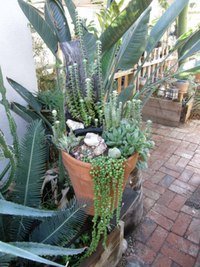
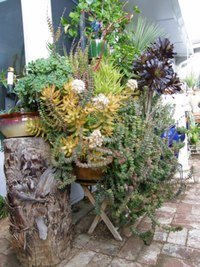
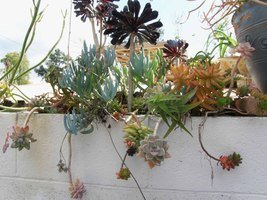
three community 'pots' of ours with draping/trailing succulents in them
Aloes. Though most suckering aloes don't actually ‘trail' out of pots, most species of Aloes are good potted plant candidates. A few actually do trail. Aloe perfoliata, once called Aloe distans, is a good trailing species for the landscape, but not the world's best potted plant. The stems usually grow up. The drooping ones tend to get too heavy and break off. But some of the climbing aloes make decent potted trailers, such as Aloe ciliaris. This is a very easy plant to start and grow.
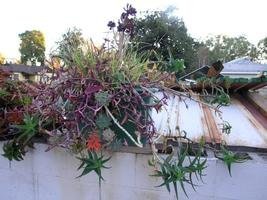
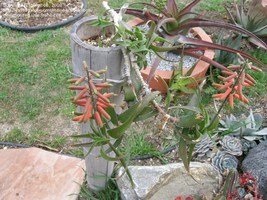
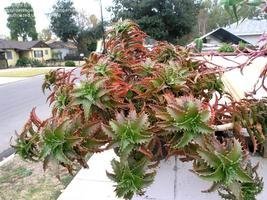
Aloe ciliaris in two different 'pots' in first two photos; Aloe congolensis trailing as it outgrows its pot
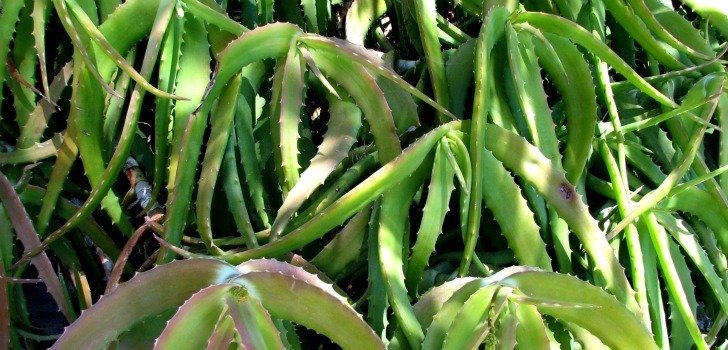
Aloe confusa- just about any of the cliff-hanging species would make good trailing potted plants
Cacti. A good number of cacti make excellent potted plants and some the very best succulent trailers one can grow. Aporophyllum, Disocactus, Hatiora, Lepismium and Rhipsalis are just a few examples of excellent trailing succulents. There are others including Schlumbergeras and Epiphyllums, but these plants are grown more for their spectacular flowers rather than their vegetative trailing looks. Most of these are quite easy to grow, though most don't seem to appreciate a lot of hot, direct sun (only Aporophyllum in my garden doesn't seem to mind).
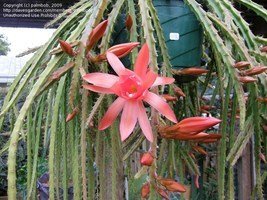
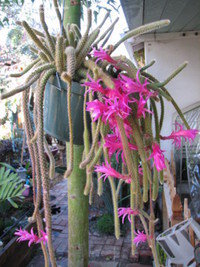
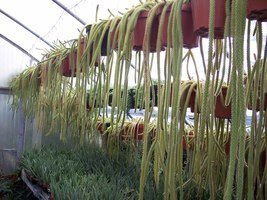
my Aporophyllum blooming in spring; Disocactus flagelliformis blooming in late spring; Disocacti flagelliformis in nursery
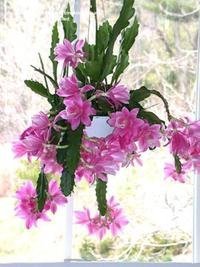
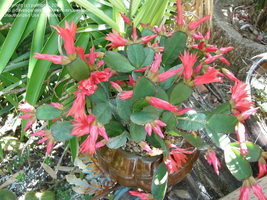
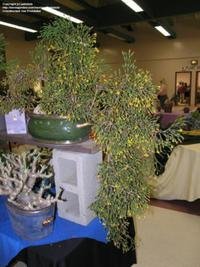
Disocactus phyllanthoides (photo Boojum); Hatiora gaertneri (Easter Cactus) Hatiora salicornioides (Drunkard's Dream)
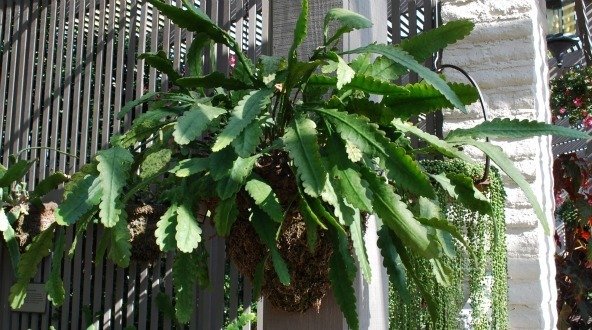
Epiphyllum 'Giant Falls'
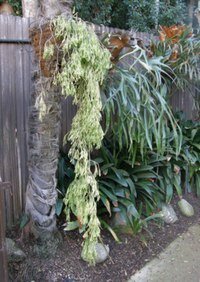
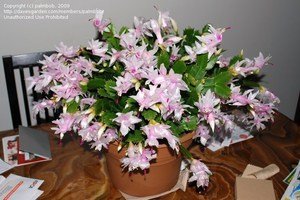
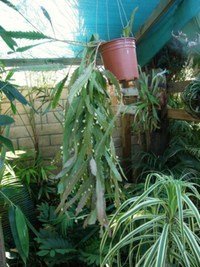
Hatiora salicornioides (a really old one); Schlumberbera sp. (Christmas Cactus); Lepismium houlletianum in my garden
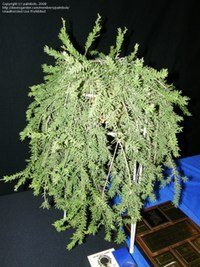
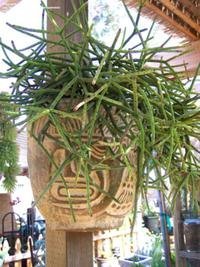
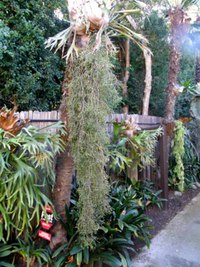
Rhipsalis mesembryathemoides Rhipsalis grandiflora Rhipsalis sp.
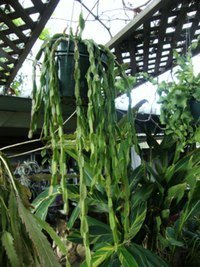
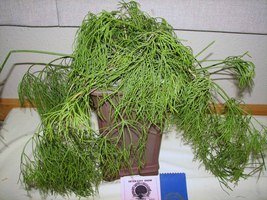
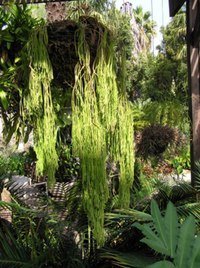
Rhipsalis paradoxa Rhipsalis capilliformis Rhipsalis clavata
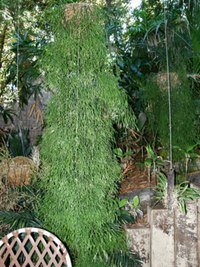
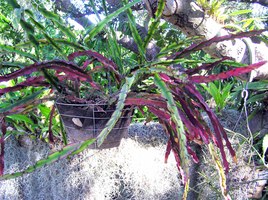
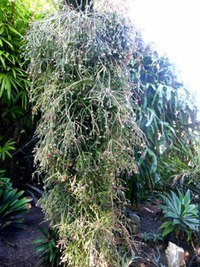
three unknown species of Rhipsalis
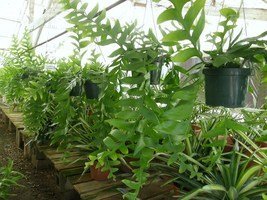
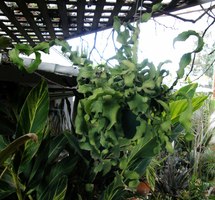
Selenicereus (Ric Rac Cactus) Epiphyllum guatamalensis in my garden
Crassulas. A few of the Crassulas are hard to beat for use in community pots where one wants attractive, interesting plants that hang below the pot's rim. Crassula rupestris and C. perforata are two similar species that are excellent choices for this sort of container situation. Crassula sarmentosa is a bit gangly, but an incredibly attractive species and a very easy plant to grow from pots. Other Crassulas include 'Calico Kitten', C. capitella, C. pellucida and C. volkensii. Most of these are happy in full sun, but also in conditions where there is quite a bit of shade. I have had trouble with the last four species surviving year after year; they get leggy or rot themselves to death (I don't want to blame myself, you understand.)
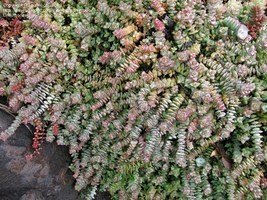
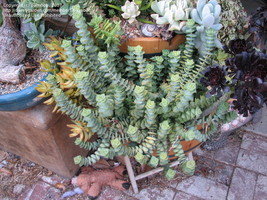
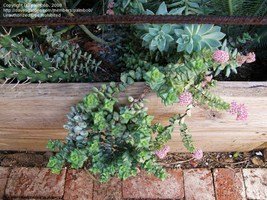
Crassula perforatas in first two photos Crassula rupestris
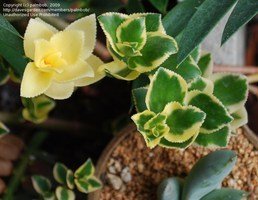
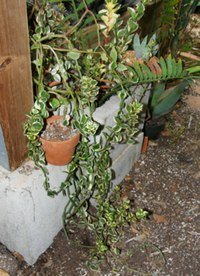 Crassula sarmentosa
Crassula sarmentosa
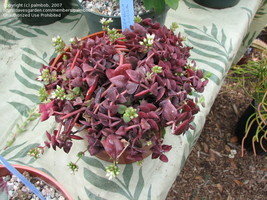
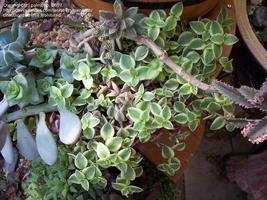 Crassula pelucida and Crassula 'Calico Kitten'
Crassula pelucida and Crassula 'Calico Kitten'
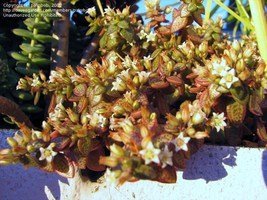
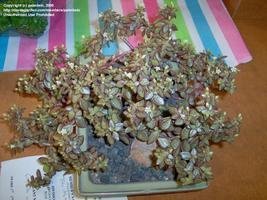
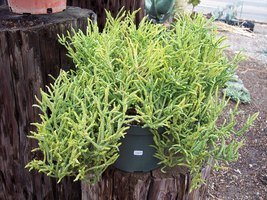
Crassula volkensii in first two photos Crassula mucosa can make a decent trailing plant, but needs cutting back frequently (gets too leggy)
Euphorbias. Not too many Euphorbias truly trail from a pot, but there are a few fantastic choices for this sort of container culture. There are a variety of pencil-like species, some which can sometimes drape over pot edges. And a number of the caudiciform species hang over the edges of pots. Euphorbia peltigera and Euphorbia hamata (some consider them the same species) are ones I found to be very easy and make fascinating potted plants (though they do require some controlling eventually).
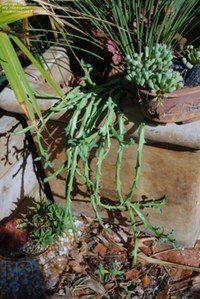
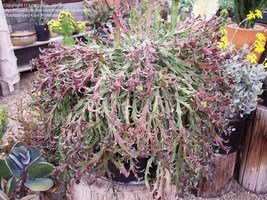 Euphorbia hamata and peltigera in my garden
Euphorbia hamata and peltigera in my garden
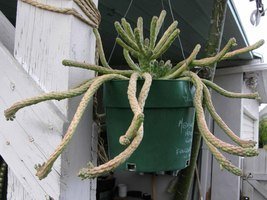
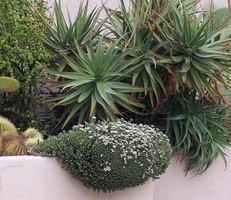 Euphorbia caput-medusae trailing
Euphorbia caput-medusae trailing
Hoyas. One of the premiere trailing succulents species are the Hoyas and their cultivars. There are hundreds of these, of which I only have experience growing a few. Perhaps someone will write an article about them in the near future and do this genus justice. I have a few species that are doing well in my climate in southern California, but many others I have tried fail to survive our cool winters or our blistering hot summers, even if in shade. Dischidias are related plants are similarly excellently adapted for hanging, draping pots. I don't have much luck with these and they are probably a bit more tropical than I can manage.
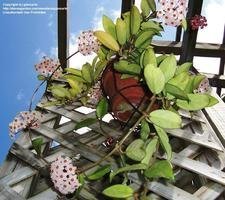
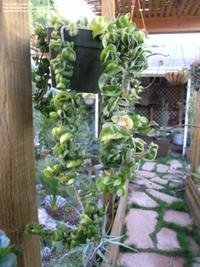
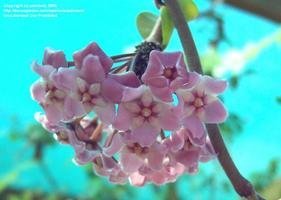
Hoya carnosa (photo Giancarlo) Hoya compacta 'Hindu Rope' Hoya compacta flowers in my garden
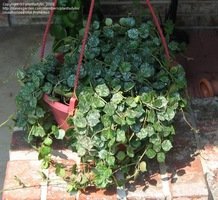
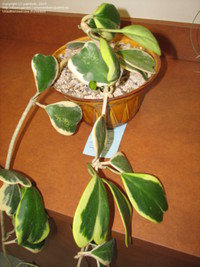
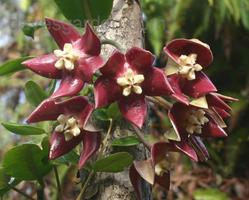
Hoya curtisii (photo plantlady) Hoya kerrii Hoya imperialis (photo AlohaHoya)
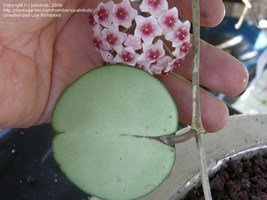
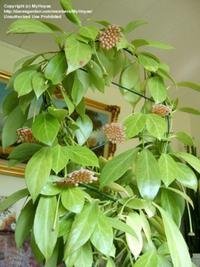 Hoya obovata and Hoya obscura (second photo MyHoyas)
Hoya obovata and Hoya obscura (second photo MyHoyas)
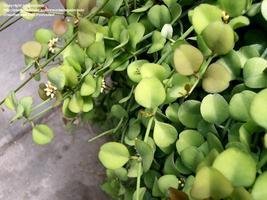
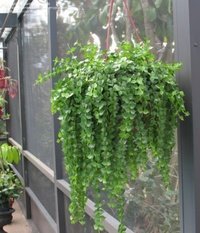
Dischidia is a genus of plants similar to Hoyas that also make good trailing succulents for pots- above are Dischidia milnei and ruscifolia (second photo plantladylin)
"Ice Plants" include a variety of genera in the family Aizoaceae and are among the most prolific of the trailing succulents for landscape use. I find most of these difficult or somewhat unattractive potted plants, though a few stand out as acceptable--if not good--choices. Delosperma is a large genus of ice plants, but also includes an odd plant called the Pickle Plant (Delopsperma echinatum) that makes a decent plant for hanging pots. Other genera of ice plants include Lampranthus, Dorotheanthus, Carpobrotus, Aptenia, Drosanthemum, Malephora, Stomatium and Ruschia.
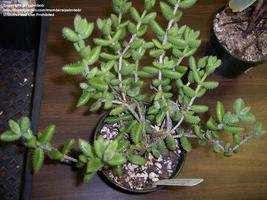
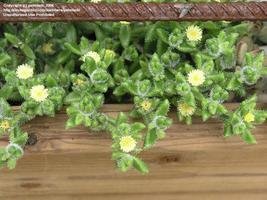 Delosperma echinatum (Pickle Plant)
Delosperma echinatum (Pickle Plant)
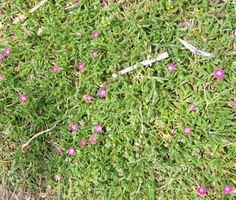
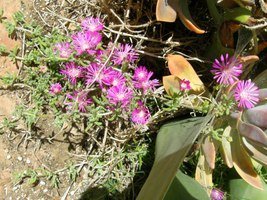
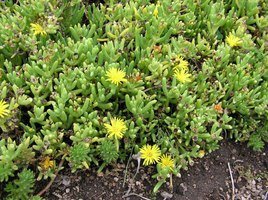
first photo: Delosperma lineare; second photo Delosperma in my garden; third photo Malephora crocea- all will drape from pots but make better groundcovers
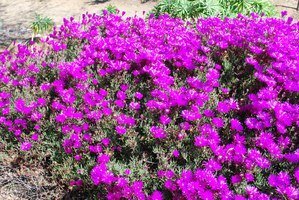
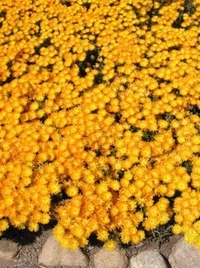
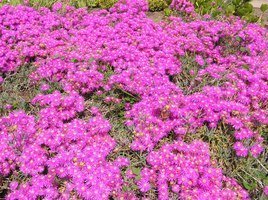
Lampranthus, another excellent groundcover succulent, will drape from pots. Above, from left to right: Lampranthus spectabilis, aurantiacus and saturatus
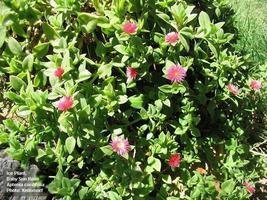
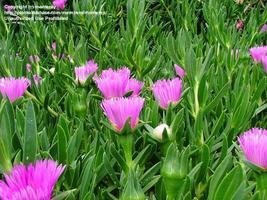
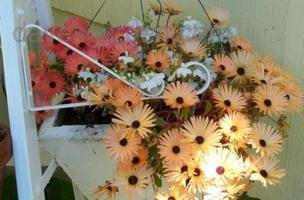
Aptenia cordifolia (Red Apple) (photo Xenomorf) is one of the most popular landscape plants in the southwest, and it is frequently utilized in public plantings in large pots (first photo); Carpobrotus chilensis (photo monterey) in second photo above; Dorotheanthus bellidiformis (photo Wheezingreens) in third photo
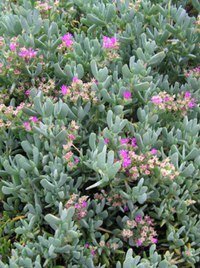
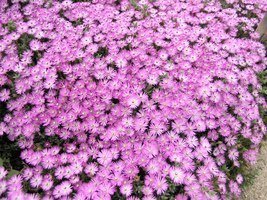 Rushia maxima and pulchella
Rushia maxima and pulchella
Crassulaceae large rosette forms: Graptopetalum paraguayense is about the best plant its category, though a few Graptoverias, Dudleyas, Echeverias and Pachyphytums trail a bit as well.
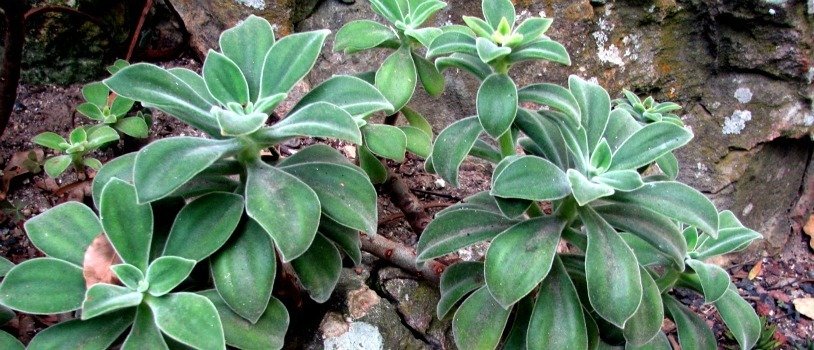
Echeveria coccinea
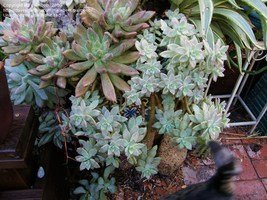
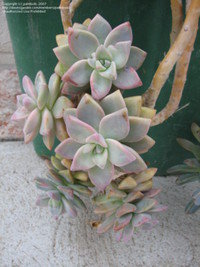
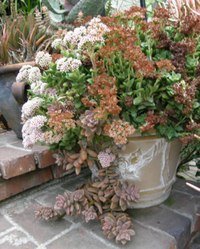
Graptopetalum paraguayense in first two photos, and an unknown Graptopetalum hanging from pot in last photo
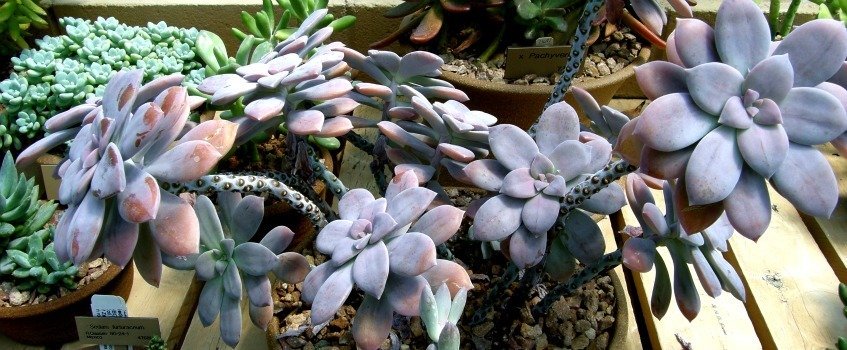
Graptopetalum pentadrum superbum
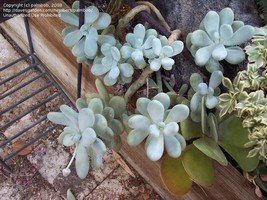
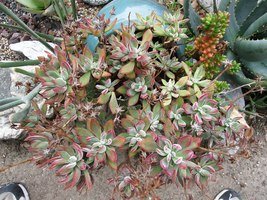
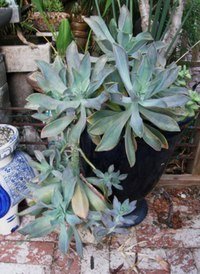
Pachyphytum oviferum Echeveria harmsii Graptopetalum 'Fred Ives'
There are far too many Sedum species to cover in this article. One could write several articles just on these trailing plants. From my point of view here in southern California, my choice of Sedum is a bit more limited as many of the stonecrops and other varieties of Sedum are not very tolerant of baking hot, dry summer weather, so I can't grow them here. Ones I have success with include the following: Sedum morganianum (I think this plant is probably the same as Sedum burrito, or if it's not, it's too close for me to distinguish the differences), S. nussbaumerianum, S. x rubrotinctum, and S. clavatum. All of these are fairly easy plants (or I wouldn't be able to grow them), though S. morganianum needs a bit of summer shade protection and rubrotinctum seems to need regular watering or also shade protection in summers.
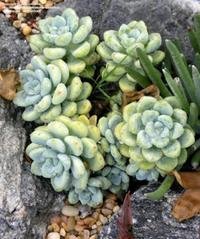
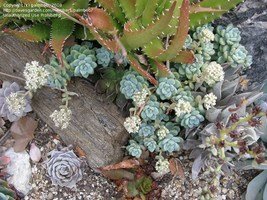
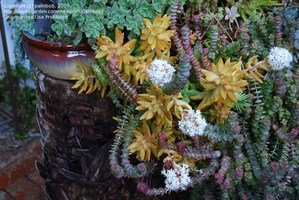
Sedum clavatum (first two photos) and Sedum nussbaumerianum in my garden
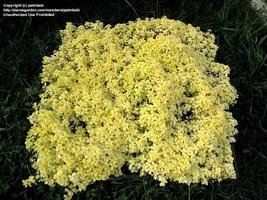
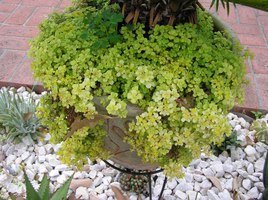
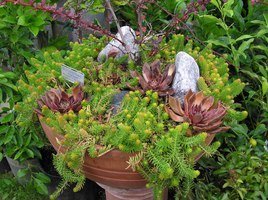
Sedum makinoi 'Ogun' in flat, and in pot in garden Sedum angelinas in pot in nursery display
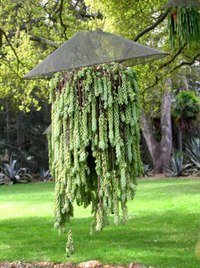
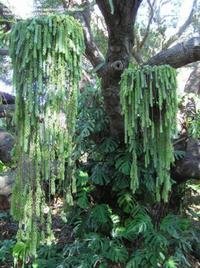
Sedum morganium (may be same as Sedum burrito) is one of the premeire of all the hanging succulent plants for pots
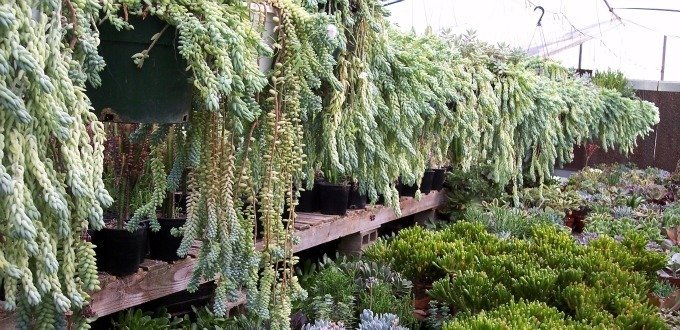
Sedum morganiums at local nursery- excellent trailing species
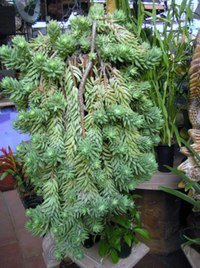
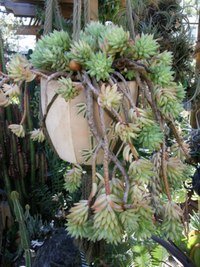 Sedum 'Harry Butterfield' (a S morganianum hybrid) is another excellent choice
Sedum 'Harry Butterfield' (a S morganianum hybrid) is another excellent choice
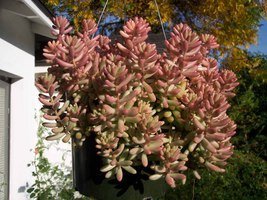
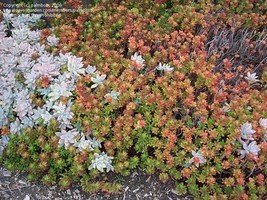
Sedum x rubrotinctum varieties do well in hanging pots, but get leggy quickly
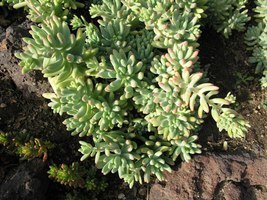
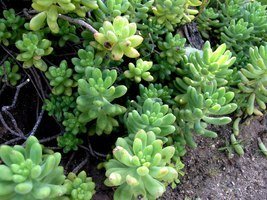
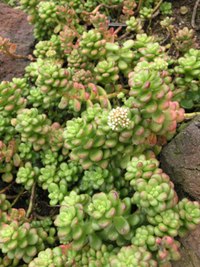
Sedum pachyphyllum Pachysedum x 'Green Beans' (a intergeneric hybrid) Sedum lucidum
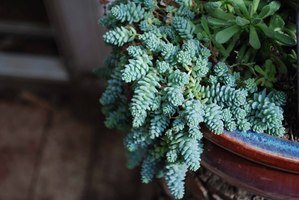
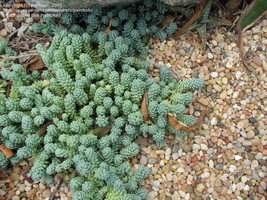
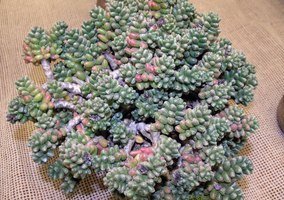
one the Sedums I love, but struggle with (Sedum dasyphyllum) Sedum furfuracea
There are also a lot of Senecios that make good draping plants, but most that I have growing in my garden are as yet still unidentified. A few of these, though, are amongst the very best succulents to grow in hanging pots or in mixed containers. The most notable to me are Senecio rowleyanus and S. radicans, curious plants that look like green strings of pearls or bananas (respectively). Senecio rowleyanus can be a touchy one at times for me, and find I either dehydrate it or overwater it. Senecio radicans however is nearly impossible for me to kill. There are several blue species of Senecios, sometimes referred to as ‘Chalksticks' that trail aggressively, but I find these too large and leggy for use in all but very large pots of planters.
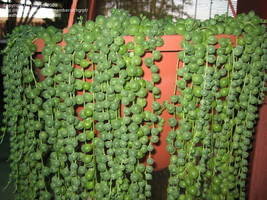
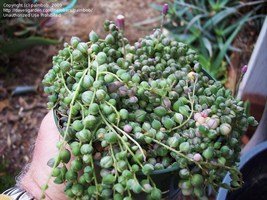

Senecio rowleyanus (first photo chgrpt) variegated form second photo growing on ground in last photo
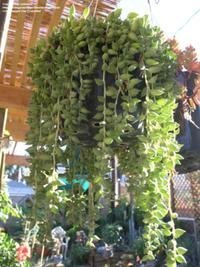
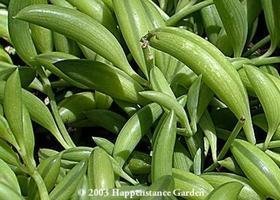
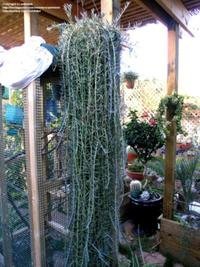
Senicio rowleyanus-like plant in my garden; Senecio radicans (photo by Happenstance) and blue-green form in my garden
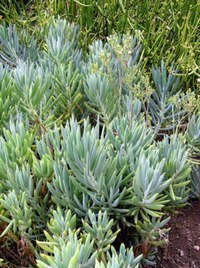
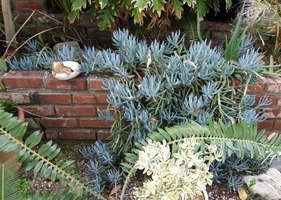
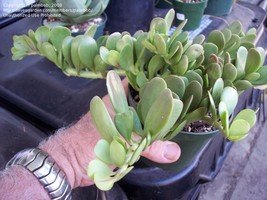
Senecio ficoides Senicio Chalk Sticks in my garden (not sure which one) Senecio jacobsenii
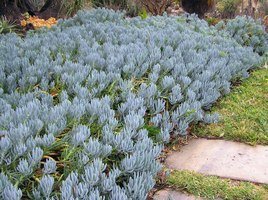
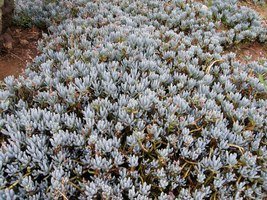 Senecios mandraliscae and serpens
Senecios mandraliscae and serpens
Tradescantias can make good trailing plants, but in my experience in my climate they are a bit unreliable in winters, and too leggy in summers, and are always breaking off. They do better in pots on the ground so they can have some support as they trail down to ground level.
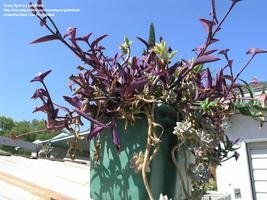
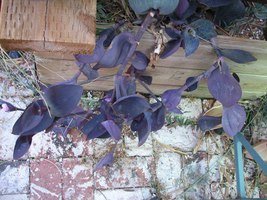
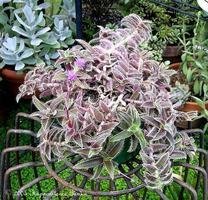
Tradescantia pallida 'Purple Heart' giant form of Tradescantia pallida related genus, Cyanotis somaliensis (photo by Happenstance)
Miscellaneous Trailers
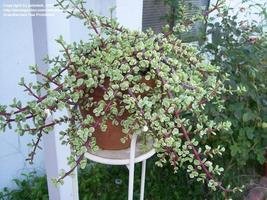
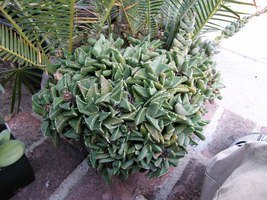
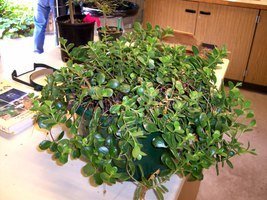
Portulacaria afra variegated Faucaria sp. Kalanchoe manginii
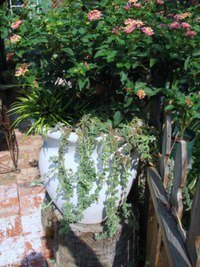
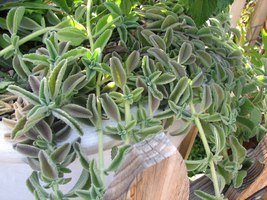 unknown Plectranthus sp. in my garden
unknown Plectranthus sp. in my garden
Copyright © www.100flowers.win Botanic Garden All Rights Reserved